The US forces in the Pacific War.
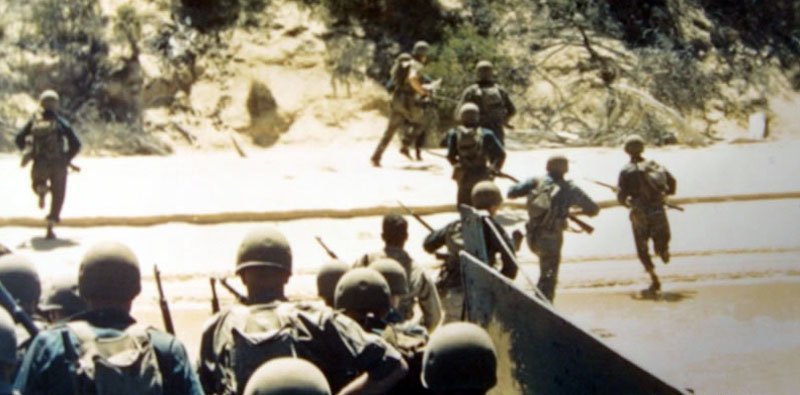
The US Army and the US Marine Corps in the Pacific from December 1941 to September 1945.
US forces in the Pacific theatre of war in WW2
Table of Contents
US forces in the Pacific during World War II played a crucial role in defeating Japan and its allies.
Overview
Command structure:
– Supreme Commander: General Douglas MacArthur (Southwest Pacific Area)
– Admiral Chester W. Nimitz (Pacific Ocean Areas)
Major components:
– US Navy Pacific Fleet
– US Army Forces in the Far East
– US Marine Corps
– US Army Air Forces
Key campaigns and battles:
– Pearl Harbor (1941)
– Battle of Midway (1942)
– Guadalcanal Campaign (1942-1943)
– Island Hopping Strategy (1943-1945)
– Battle of Iwo Jima (1945)
– Battle of Okinawa (1945)
Strategic objectives:
– Defend Allied territories
– Regain Japanese-occupied areas
– Establish naval and air superiority
– Advance towards the Japanese home islands
Notable tactics and strategies:
– Island hopping
– Amphibious warfare
– Aircraft carrier-based operations
– Strategic bombing campaigns
Technological advancements:
– Improved aircraft (e.g., F6F Hellcat, B-29 Superfortress)
– Radar technology
– Cryptanalysis and code-breaking
Allied cooperation:
– Coordination with British, Australian, and New Zealand forces
– Support from local resistance movements
Challenges:
– Vast distances and logistical difficulties
– Harsh tropical conditions
– Fanatical Japanese resistance
Conclusion of the war:
– Atomic bombings of Hiroshima and Nagasaki
– Japanese surrender on September 2, 1945
The US forces in the Pacific during WW2 faced a determined enemy and challenging conditions but ultimately prevailed, leading to the defeat of Japan and the end of World War II in the Pacific theater.
US Army
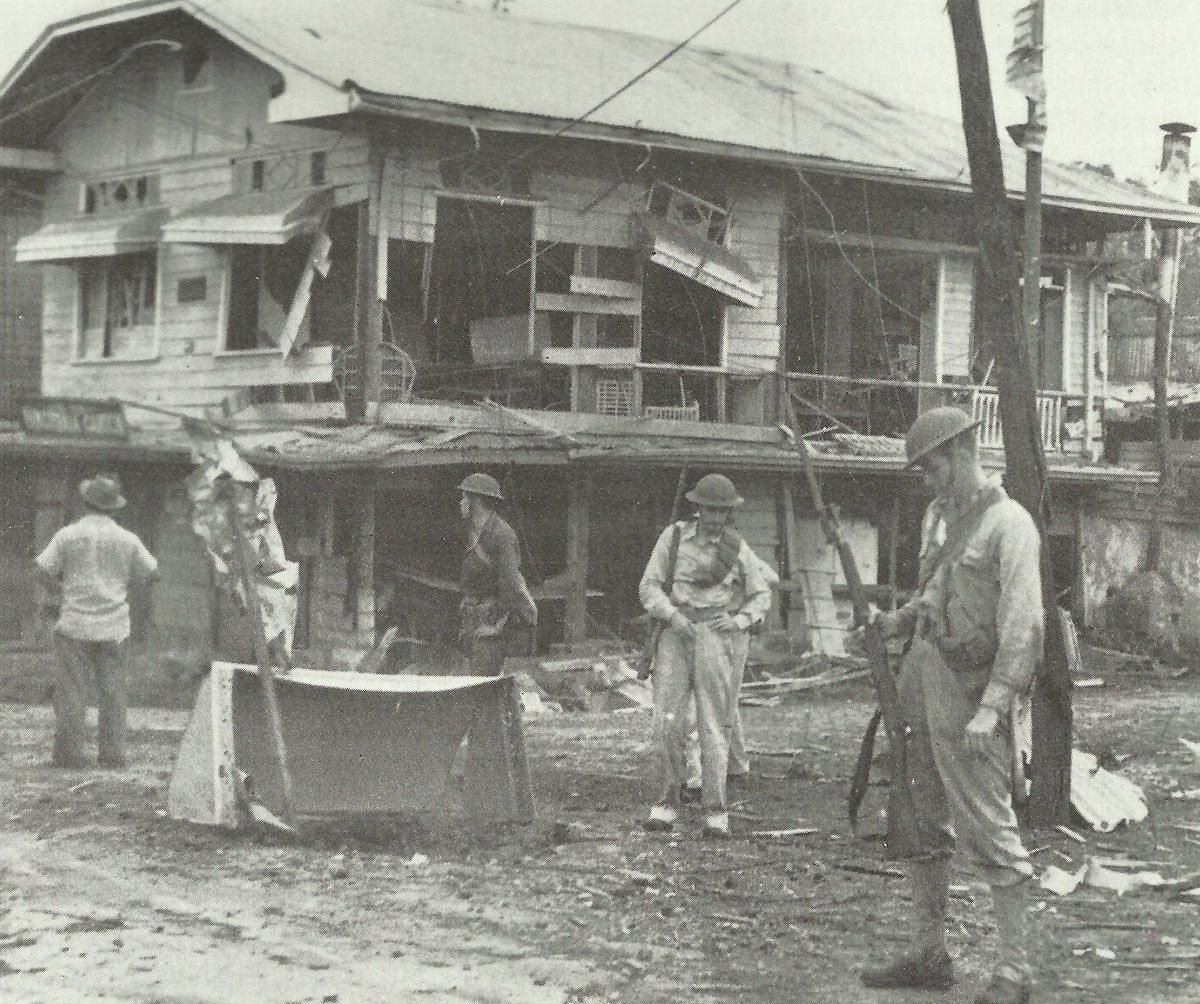
The rapid advance of the Japanese across Southeast Asia and the Pacific after their attack on Pearl Harbor on 7 December 1941 surprised the US army. Inferior and isolated, America’s Pacific Island garrisons fell to the Japanese armed forces, although the besieged US troops fought a bitter battle.
Already in spring 1942 the Japanese had reached their original war goals and now tried to extend their conquests further. Their destinations were New Guinea and Guadalcanal. Here the Japanese met their first serious resistance on land when they met the united American army and navy troops. With the help of the Australian troops, the Japanese offensive was fended off.
The battles of 1942 exhausted the Japanese and put them on the defensive, allowing the US forces to take the initiative that they would not give up during the rest of the war.
Given the amphibious nature of most of the operations, the US Army worked closely with the US Navy and Marine Corps.
Within the American armed forces, however, there were considerable debates about the conduct of the Pacific War. In addition, there were rivalries between the different branches of the armed forces over the importance of their respective roles and the allocation of resources. However, these clashes did little harm to American war efforts during the Pacific War.
The American strategy in the Pacific included a two-way attack. To one under Army General MacArthur from the Southwest Pacific, which was thus mainly the responsibility of the US Army, and a second and command of Admiral Nimitz from the US Navy to conquer the islands in the Central Pacific. The latter offensive was led by the Navy, although army units were also involved.
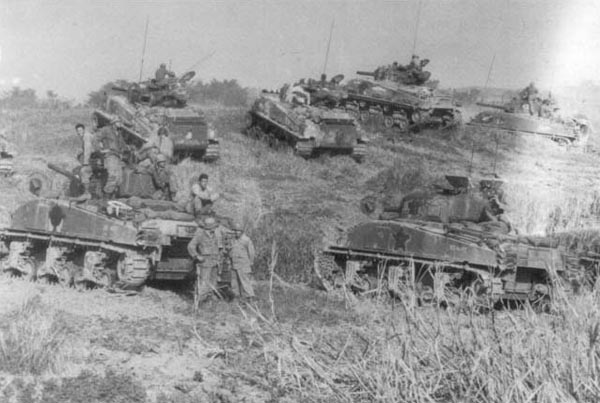
Although the Japanese defended their island bastions with remarkable stubbornness, they could not stop the American advance. By the end of 1944, the US Army had returned to the Philippines, where the 6th US Army, supported by the 8th Army, began the destruction of the 250,000 strong Japanese 14th Army.
While the fighting continued in the Philippines, the newly formed 10th US Army attacked Okinawa, which was conquered by American troops until 22 June 1945.
In the summer of 1945 preparations were made for the attack on the Japanese homeland islands, but this potentially bloody operation was prevented by the surrender of the Japanese after the dropping of American atomic bombs.
In the Pacific, the US Army’s losses were relatively small. A total of 160,454 men were lost, including 28,880 killed in action. Further 4,458 losses suffered the US armed forces in the combat zone of China, Burma and India.
Orders of Battle US Army and Marine Corps in the Pacific 14 August 1945:
Army | Corps | Divisions |
|---|---|---|
6th Army | Reserves | 40 Inf.Div., 11. US/brit.Div. |
I Corps | 25, 33, 41 Inf.Div. |
|
IX Corps | 77, 81 Inf.Div. |
|
XI Corps | 43 Inf.Div., Americal Inf.Div., 1 Cavalry Div. |
|
V Ampib. Corps | 2, 3, 5 Marines Div. |
|
8th Army | X Corps | 24, 31 Inf.Div. |
XIV Corps | 6, 32. 37, 38 Inf.Div. |
|
Reserves | 93, 96 Inf.Div. |
|
10th Army | XXIV Corps | 7, 27 Inf.Div. |
III Amphib. Corps | 1, 4, 6 Marines Div. |
|
US Army Forces middle Pacific | 98 Inf.Div. |
Organization
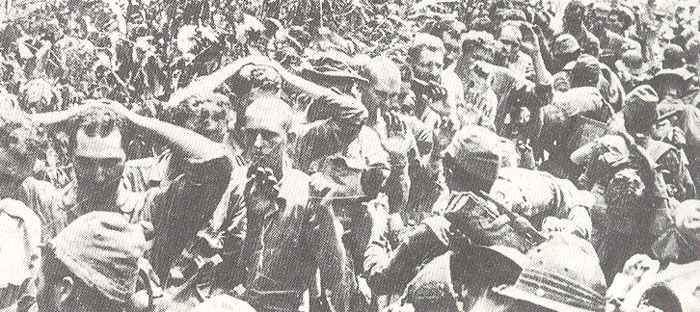
In 1941, the US Army was scattered across the Pacific in small outposts, except for the Philippines, where there was a significant American presence in support of US-trained Philippine forces.
The American ground forces were combined to form the Philippine Division, which was destroyed by the Japanese on Bataan, with all members of this formation either killed or captured.
Set up in January 1943, the 6th US Army became the spearhead of American island jumping in the Pacific. Its first mission took place in the battle for the conquest of Kiriwina in the Woodlark Islands in July 1943. This was the first step on the more than 2,700 mile (ca. 4,345 km) long advance to the Philippines.
For the landing on the Philippines the 6th Army was supplemented by the 8th Army, which both played an important role in the reconquest of these islands.
Until the end of this war, the 6th US Army consisted of three corps with 10 divisions and the 8th Army of two corps with 8 divisions.
The 10th US Army was originally formed in June 1944 for the planned invasion of Formosa. However, its target was later Okinawa. For the conquest of the island, the 10th Army consisted of an infantry corps of four divisions and an amphibious corps of three marines infantry divisions. This force had a total strength of 154,000 men.
Although the army saw only one deployment in World War II, it lost almost 50,000 men on Okinawa.
The Infantry Division, which formed the backbone of all three US armies in the Pacific, was organized just like the US Army North-West Europe.
However, what was necessary to combat the Japanese soldiers fighting to their last breath under difficult conditions was a coherent structure at section and platoon level, and the American Army attached great importance to the selection of individuals capable of leading small groups of men.
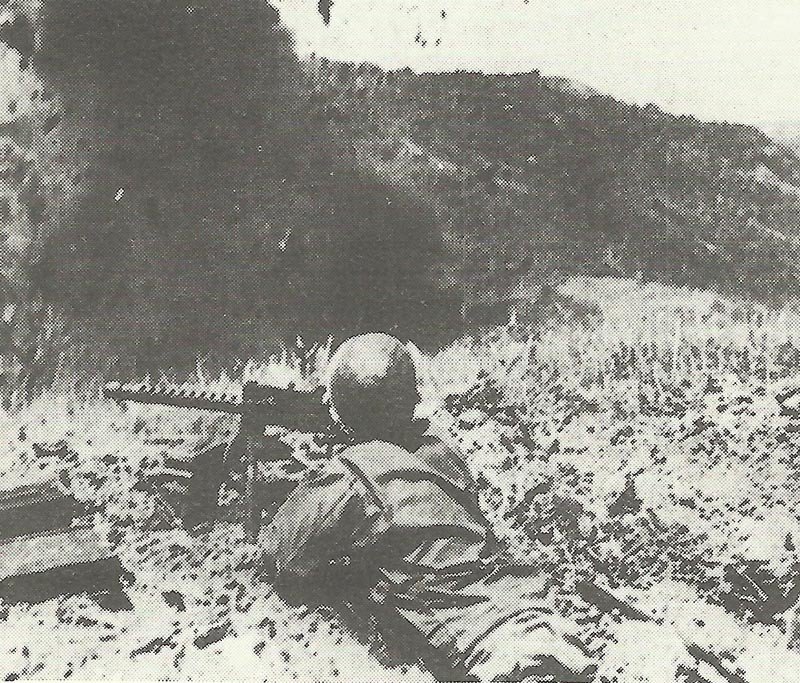
The United States had two cavalry divisions at the outbreak of war, which saw infantry operations as part of the 6th US Army. The division was organized on the old square structure instead of the triangle structure, with two cavalry brigades with two regiments each.
In addition, there were two field artillery battalions which, with the usual support troops of a division, brought the strength of the formation to 12,724 men.
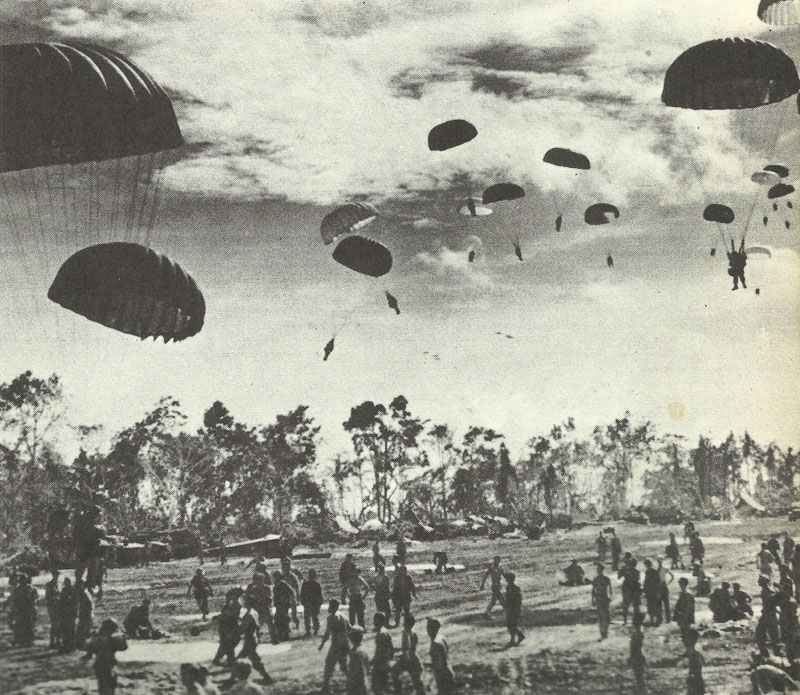
An airborne division was deployed in the Pacific theater of war. This 11th Airborne Division fought both as infantry and paratroopers in the Philippines.
The 11th Airborne Division was organized like the other Airborne Divisions on the European theater of war, but according to an older, smaller scheme of 1942 with a total strength of only 8,505 men.
No larger, independent tank formations were formed for the Pacific theater of war. Only in the Philippines and Okinawa were American tanks used on a larger scale.
In addition to the important Pacific operational areas, US Army troops were also active in the fighting in China and Burma. The best known US unit during the campaign in Burma were the Merill’s Marauders, which under the command of General Stilwell became the ‘Mars’ task force. The task force consisted of the 475th US Infantry Regiment and the 124th Cavalry Regiment, the Chinese 1st Regiment and the 612th US Field Artillery Regiment.
US Marine Corps
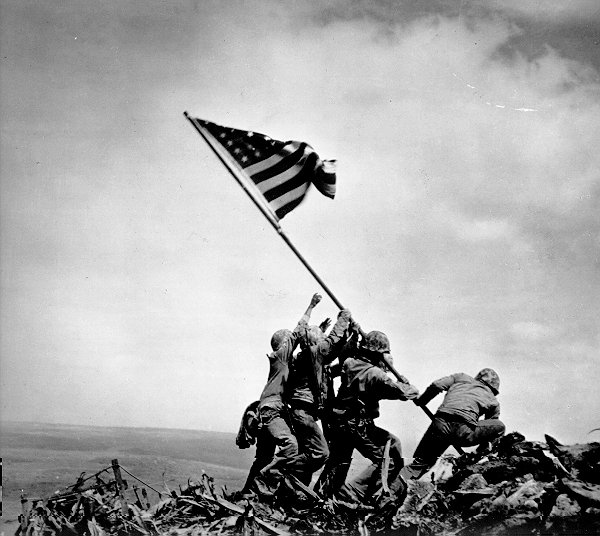
During World War II, the US Navy Corps earned a reputation as one of America’s toughest combat units and was continuously deployed in the Pacific War, from Wake Island in 1941 to Okinawa in 1945.
The Marines’ first major campaign began with the attack on Guadalcanal in the Solomon Islands on August 7, 1942. With little naval and air support, the Marines led a desperate battle against the Japanese, who carried out a series of fanatical but ultimately unsuccessful attacks to expel the Americans.
After their victory on Guadalcanal, the Marines took part in the Central Pacific battles, especially on Tarawa. The Navy’s campaign continued with the conquest of the Mariana Islands, followed by Iwo Jima and Okinawa.
The losses of the Marine Corps in World War II amounted to 91,718 men, of whom 15,161 died in combat and a further 4,322 died for other causes.
Organization
The Marine Corps performed two basic military functions. The first was to act as a land combat force for the Navy and the second to conduct independent amphibious operations. It was this latter function that gained considerable importance during World War II within the Fleet Marine Force.
In 1939, the strength of the Naval Corps was less than 20,000 men. By the time the war broke out in December 1941, it had grown to 65,881 men, and by the end of the war there were over 450,000 crews and officers in the Navy Corps.
To some extent, the Navy Corps was also an army within an army that even had its own aviator units.
In February 1941 the USMC (US Marine Corps) was organized in two brigades, which subsequently became the 1st and 2nd Marine Division. The process to bring the two units to full strength, however, was lengthy and the two divisions were not operational until mid-1942.
The Marines Division was organised as a reinforced infantry division and had three infantry regiments with three battalions each. In addition there was an artillery, technician and pioneer regiment.
The overall strength of the division was just under 20,000 men and it was often further strengthened for certain tasks.
Specializing in amphibious landings against fortified Japanese bases, the Marines Division had a large number of engineers to clear the way for the storm troops.
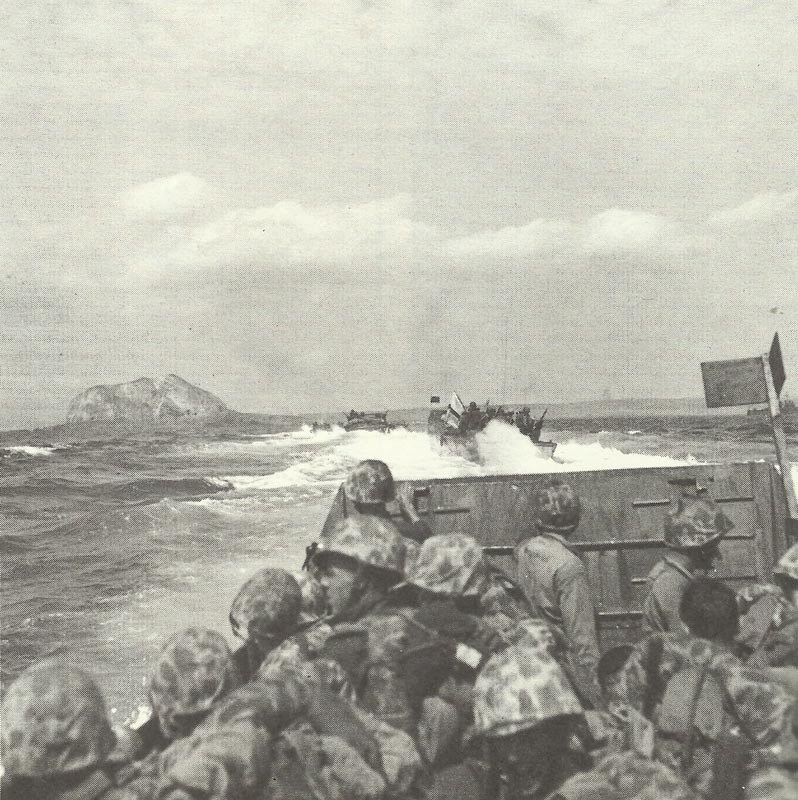
The two Marines divisions were merged into the I Amphibious Marine Corps (IMAC). Due to the dispersed battles in the Pacific, this was rather an administrative than a tactical grouping.
In 1943 three more Marine divisions were set up and in September 1944 the 6th Marine division became operational.
In 1943, a new corps was set up, known as the V Amphibious Corps (VAC). This corps was involved in the fighting on the Gilbert and Marshall Islands and subsequently on the Mariana Islands.
The 4th and 5th Marine Divisions participated in the invasion of Iwo Jima and were subsequently supported by the 3rd Marine Division in the fighting there. The three divisions suffered 23,303 man losses in the hard battle for the island.
The III Amphibious Corps, which had replaced the IMAC, supported the army operations on Okinawa and consisted of the 1st, 2nd and 6th Marine Divisions. The Marines lost 15,000 men out of a total of 50,000 American victims.
The air force of the Marine Corps consisted of two air groups and 10 squadrons at the outbreak of war. During the war, however, the Air Force of the Marine Corps was rapidly expanded. Until January 1945 there were five Wings with a total of up to 132 squadrons, as well as additional support units. Their personnel increased from about 11,000 in 1941 to 135,000 men in 1945.
The task of the Marine Corps pilots was to provide tactical air support in the Marines’ ground battles.
US Army and Marine units in the Pacific:
| Infantery Division 1943 | Marine Division 1944 | Airborne Division 1942 | |
|---|---|---|---|
| Infantry Regiments | 3 (each with 3 Battalions each of 860 men) | 3 (each with 3 Battalions and one heavy weapons company) | 3 (each with 3 Battalions) |
| Total men | 14,253 | 17,465 | 8,505 |
| Machine guns | 636 (243 BAR, 157 medium, 236 heavy MG) | 869 (465 medium, 161 heavy .5in MG) | 292 (187 medium, 105 heavy MG) |
| Bazookas | 557 | 172 | 182 |
| Flamethrower | - | 267 | - |
| Mortars | 144 (90 x 60mm, 54 x 81mm) | 153 (117 x 60mm, 36 x 81mm) | 111 (75 x 60mm, 36 x 81 mm) |
| Artillery | 66 (54 x 105mm howitzers, 12 x 155mm howitzers) | 48 (24 x 75mm Pack howitzer, 24 x105mm howitzer) | 36 x 75mm Pack Howitzer |
| Anti-tank guns | 57 (57mm) | 48 (12 x 75mm, later replaced by 105 mm howitzers, 36 x 37mm) | - |
| Anti-aircraft guns | (all anti-aircraft battalions were controlled by the superior army command) | = | 24 (37mm) |
| Vehicles | 1,440 (note: this capacity was not enough to move all equipment and personnel simultaneously). All types total: 2,653 | 1,056 (all types, including Jeeps) | 385 (trucks) |
| APC's | 5 | - | - |
| Tanks | - | 46 (M4 Sherman) | - |
References and literature
The Armed Forces of World War II (Andrew Mollo)
World War II – A Statistical Survey (John Ellis)



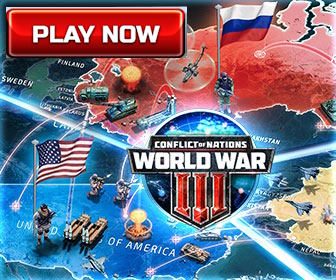





The Japanese were stopped on land by the Australian army at Milne bay and Kokoda with some minor support from the USA not the other way around. The offensives to drive the Japs out of advanced bases were the coastal campaign in PNG and Guadalcanal and until 44 Australian troops were doing most of the heavy lifting in the SWP theatre.